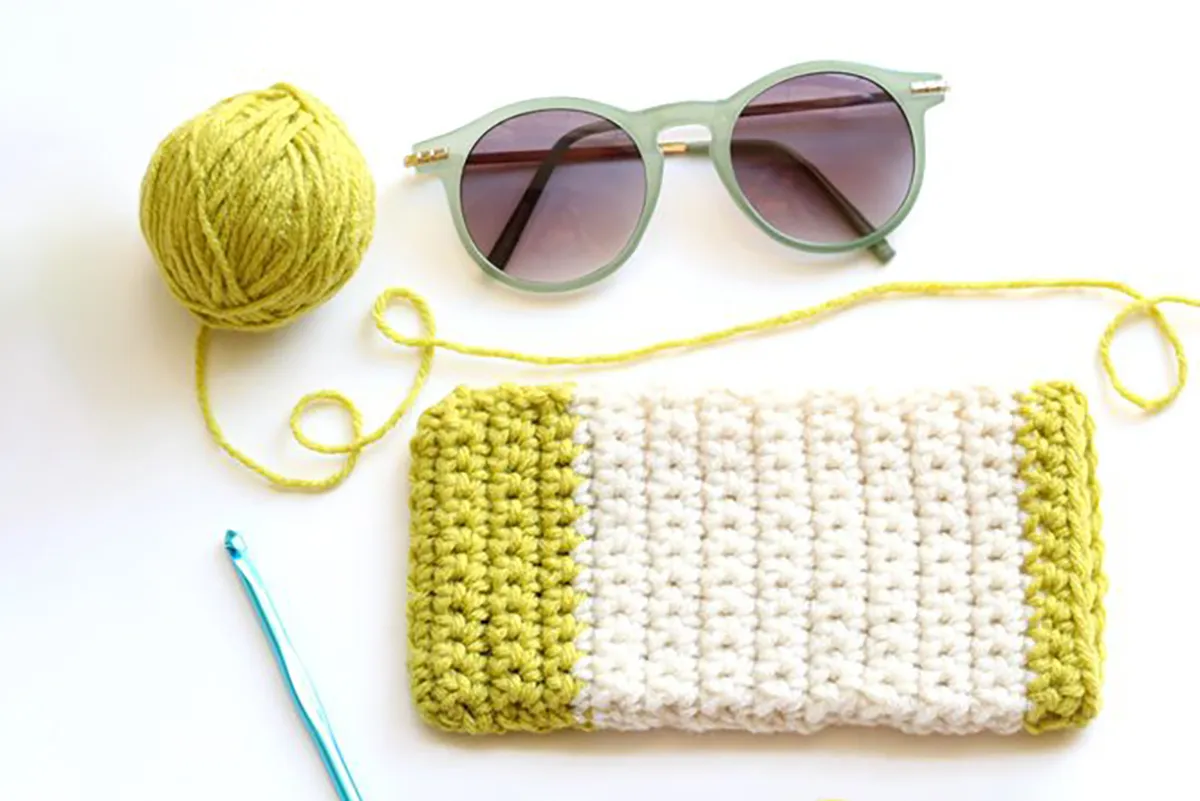How to crochet for beginners guide
If you've ever wanted to learn to crochet but don't know where to start, you've come to the right place!
We've written this handy beginners guide to crochet that includes everything you need to know so that you can start hooking as soon as possible!
This beginner guide on how to crochet for beginners is written in order of things you need to know, with links to more in-depth tutorials for each of the specific parts. You can also use the handy links below to jump to a specific section.
For more free crochet projects and inspiration sign up to our newsletter!
What is Crochet?

Crochet is made with just one hook and some yarn, rather that two needles which are used in knitting. Although many people associate crochet with knitting, there are some key differences.
Crochet can be thought of as lots of different types of knots, whereas knitting is more like interlocking loops. Because of this, crochet fabrics tend to be more solid, which makes them great for creating 3D shapes and motifs. In contrast, knitting has an elasticity and stretch to the final fabric, making it perfect for socks and garments.
However, this is just a general summary – both crafts have a huge range of possibilities.
What do you need to start crocheting

You need just two things to start crocheting:
If you want to get stuck in straight away, a 4mm crochet hook and light coloured DK (double knit) acrylic yarn are perfect for crocheting for beginners.
You'll also need a pair of scissor or snips to fasten off your piece of crochet once you're finished.
As you progress, you will need to buy a few additional crochet accessories, such as a yarn needle or stitch markers, but you don't need these to get started.
- Take a look at the best crochet kits for beginners
Quick recommendations
If you can't wait to get started, here are some quick links to make a beginners crochet kit that you'll need to learn how to crochet!
- Pony 4mm Crochet Hook
SQUIRREL_TEXT_13079709
- Stylecraft Special DK yarn
SQUIRREL_TEXT_13194273
- Yarn snips/scissors
SQUIRREL_TEXT_13091681
How to crochet for beginners
Once you've got your essential crochet kit, then you're ready to get started!
Check out our how to crochet for beginners video below, which includes how to start crochet and create your first stitches.
Remember that you can pause the video to help you master each technique. If you need more help, keep reading for our beginners guide to crochet below.
How to crochet for beginners - basic steps to crochet
How to start crochet
1. How to hold a crochet hook and yarn

Finding a comfortable way to hold your crochet hook and yarn can be one of the first stumbling blocks when learning how to crochet for beginners.
Your stitches are likely to be too tight or too loose on your first attempt, but finding a comfortable way of holding your hook will help with this.
There are two main ways that people hold their hooks: like a knife, or like a pen. It's all about finding the method that feels most comfortable to you!
You want to be holding your hook roughly 3-5cm down from the tip of your hook, as this will give you the best level of control and room to put your stitches onto the hook.
- Find the best method with our how to hold your hook guide.
2. How to tie a slip knot

A slipknot is the start of every crochet project - it's how you attach the yarn to the hook.
People can find it a bit confusing initially, but we've included two ways of how to make this simple knot in our video above.
P.S. As this is such a fundamental step of how to start crochet projects, you'll never see it written at the start of a crochet pattern.
- Check out our step-by-step guide on how to make a slipknot.
3. How to chain crochet
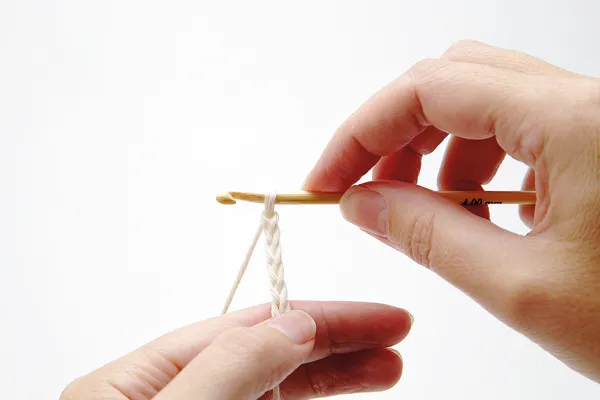
Once you've sorted your slipknot it's time to get started! First you're going to make what we call chain stitches.
Although chains are not technically a stitch in the traditional sense of the word, they're perhaps one of the most important steps for how to start crochet. Chain stitches at their basic level are used for two things:
- To set the starting width of a piece of crochet (normally referred to as foundation chains)
- To set the height of your actual stitches (these will normally be referred to as turning chains - more on this below)
A chain is made by wrapping the yarn around the hook (referred to as yarn over/YO/yrh), then pulling that loop through the loop that is already on your hook (from the slipknot on the first one).
4. How to double crochet (in US terms, this is how to single crochet)
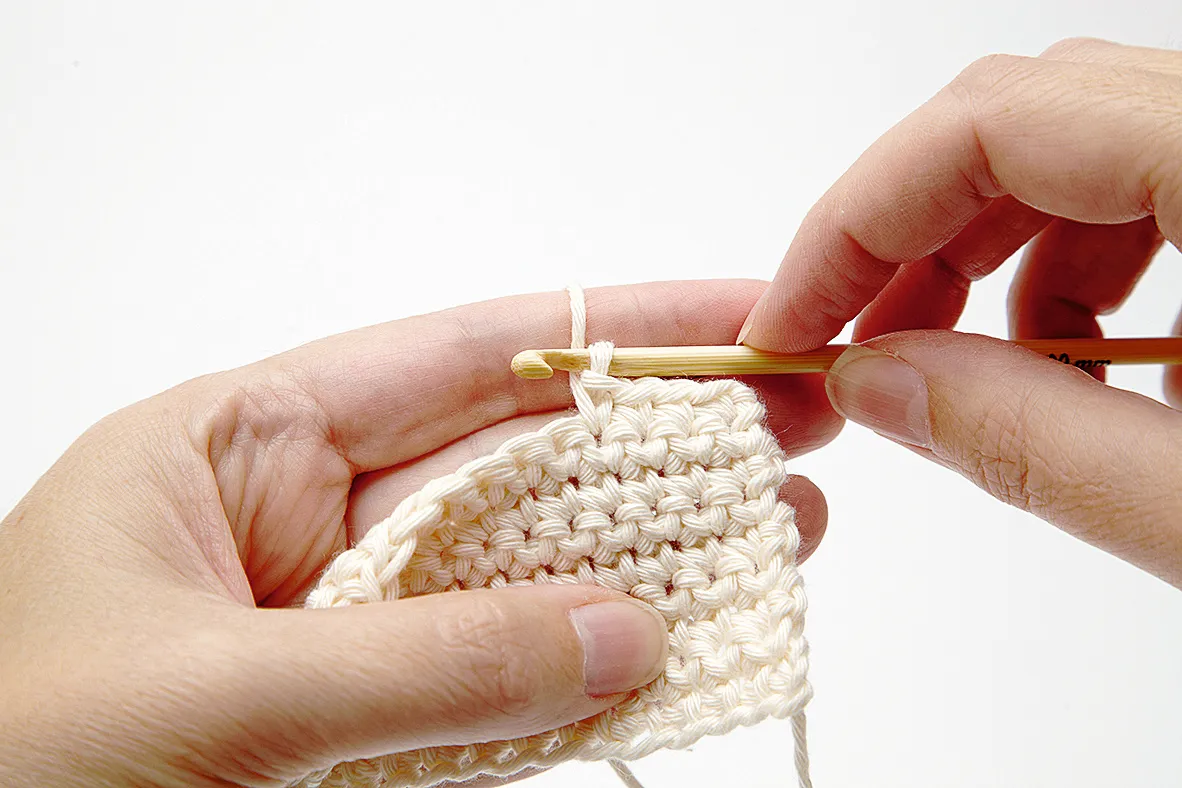
A UK double crochet stitch is the simplest and most basic of crochet stitches. It's a very short, dense and solid stitch, great for things like soft toys and is the perfect stitch for learning how to crochet for beginners!
When it comes to 'actual' stitches like the double crochet stitch, you will need to make a turning chain at the start of each row of stitches. By doing this, your hook will be at the correct height for your row of stitches. If you don't do a turning chain your stitches will end up on a slant.
The amount of turning chains you need for different stitches varies, but you will always be told how many turning chains to make in a crochet pattern.
With UK Double crochet stitches, often abbreviated to a dc stitch, you will always need to make one turning chain at the start of each row. To make your first double crochet stitch into chains, start by skipping the first chain that is closest to your hook as this will act as your turning chain.
Why does crochet have different names in the US and UK?
There are two different terminologies used in crochet - UK and US. We'll come back to this later on when we look at Crochet abbreviations.
To make a double crochet stitch - Insert your hook through the next chain, so that you have two loops of the chain on the top of your hook and one on the bottom. Wrap your yarn round hook and pull through the chain, then yarn round hook again, and pull through both of the two loops on your hook.
Then simply repeat this process in each chain along until you have completed your row.
- Take a look at our full guide on how to double crochet.
Top Tip: One of the great things about crochet for beginners is that if you make a mistake, it's easy to undo it! Simply remove your hook from the work, and slowly pull the yarn to undo your stitches. Then once you've got past the bit where you made your mistake, you can just put your hook back into the loop and start again.
5. How to fasten off crochet

Once you've got the hang of your double crochet stitches, it's time to finish - but how? This process is called fastening off!
As the name suggests, fastening off means that the yarn can't unravel and your stitches won't come undone.
To fasten off, once you're at the end of a row cut the yarn leaving approx. 15cm. Then using your hook (or you can just loosen your loop and use your hands) pull this tail of yarn through the remaining loop on your hook. Pull this tight and that's all there is to it - you've done your first piece of crochet!
- For more help, see our tutorial on how to fasten off crochet.
6. Crocheting in the round

In this beginners guide to crochet we're focussing primarily on how to crochet for beginners, and doing a flat piece of crochet where you go back and forth is the simplest way to learn how to crochet.
However, once you've mastered the basics, you'll quickly want to learn how to crochet in the round. This is how you make circular shapes, and is essential for lots of different types of projects, from toys to granny squares.
Patterns that include crocheting in the round may tell you to make a magic loop (which is also called a magic ring or magic circle). This is an alternative way of starting your crochet in the round, and you can find out more in our guide on how to make a crochet magic loop.
Types of Crochet Stitches
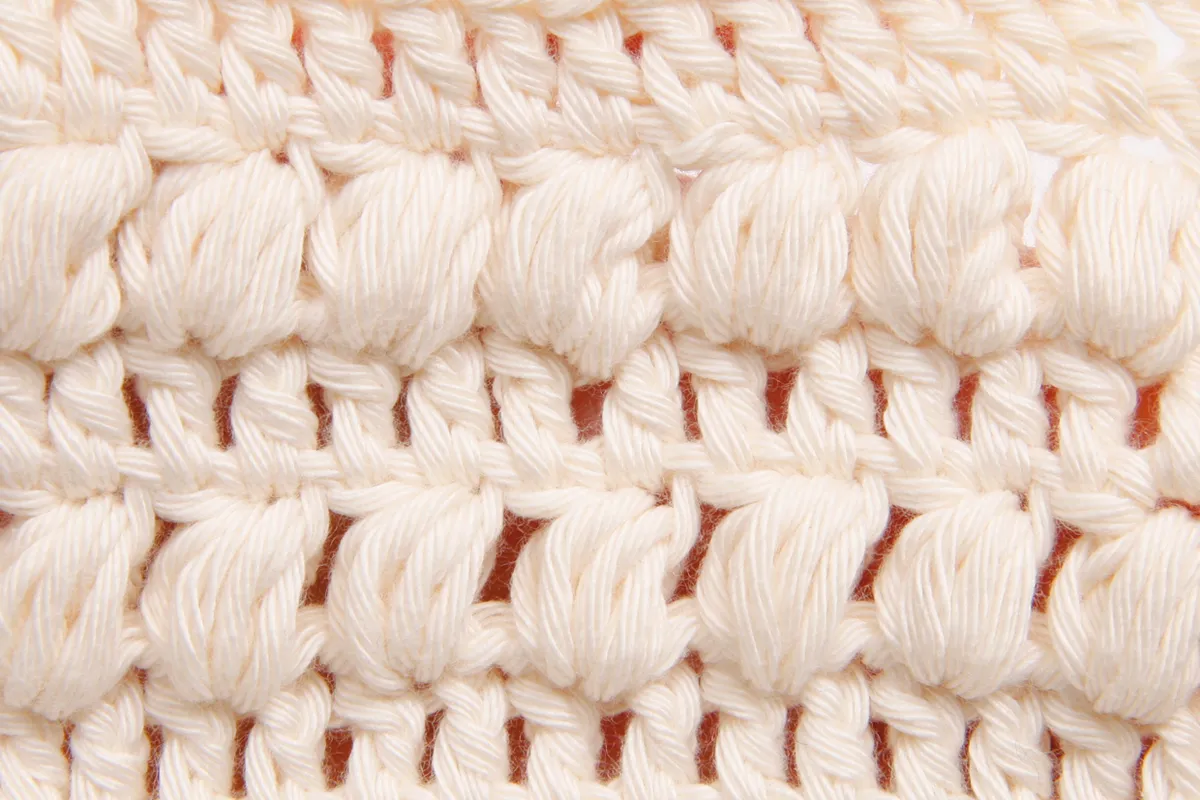
Now that you've learnt the basics of how to crochet for beginners, there's plenty more crochet stitches for you to try!
- Take a look at our library of crochet stitches
Become a crochet stitch expert
We've got loads of tutorials for different crochet stitches on our how to crochet page. If you're looking for a great crochet stitch book, why not try this Handbook of crochet stitches, or you can find more crochet stitch books in our list of top 30 crochet books
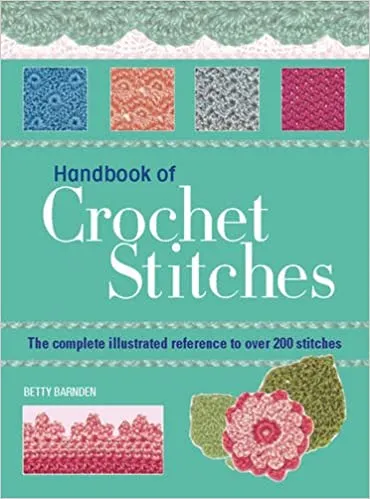
Types of crochet yarn
Crochet and knitting yarns are essentially the same, but there are a few things for crochet beginners to keep in mind when choosing a yarn. You will often see yarns referred to by weight - this refers to the thickness of the yarn (not how heavy it is!).

Sock yarns or 4ply yarns are very popular with knitters, but they're probably a little bit too fine to use when learning how to crochet for beginners.
It's better to start off with a double knitting (DK) or Aran weight yarn as these are of a medium thickness that will help you to see your stitches a bit more clearly.
If you don't have perfect eyesight or are trying to teach children how to crochet, you could try using a chunky yarn, as your stitches will be nice and big. Just remember you'll need to use a larger hook for these (normally around 5-6mm). Find out how to adjust your hook size in our guide to crochet hook sizes.
Yarns also come in a wide range of different fibres, and some can prove particularly tricky for beginners, so it's best to start with an acrylic or cotton yarn.
- Read our What are yarn weights and which yarn should I use guide.
Best yarns for learning how to crochet for beginners
- Scheepjes Colour Crafter - 100% Acrylic DK yarn
- Paintbox Simply DK - 100% Acrylic DK yarn
- Paintbox Yarns Cotton Aran - 100% Cotton Aran yarn
- Lion Brand 24/7 Cotton - 100% Cotton Aran Yarn
Crochet essentials for beginners
As well as your yarn and hook, you'll also need a good pair of scissors and a yarn needle (often called a tapestry needle) to finish off your crochet.
If you've really got the crochet bug, then there's a few extra things you'll want to add to your crochet kit, from basics such as a tape measure and stitch markers, to more advanced items like a yarn winder and swift. All of these are included in our round-up of the top crochet accessories.
- Get what you need with our crochet kits for beginners guide
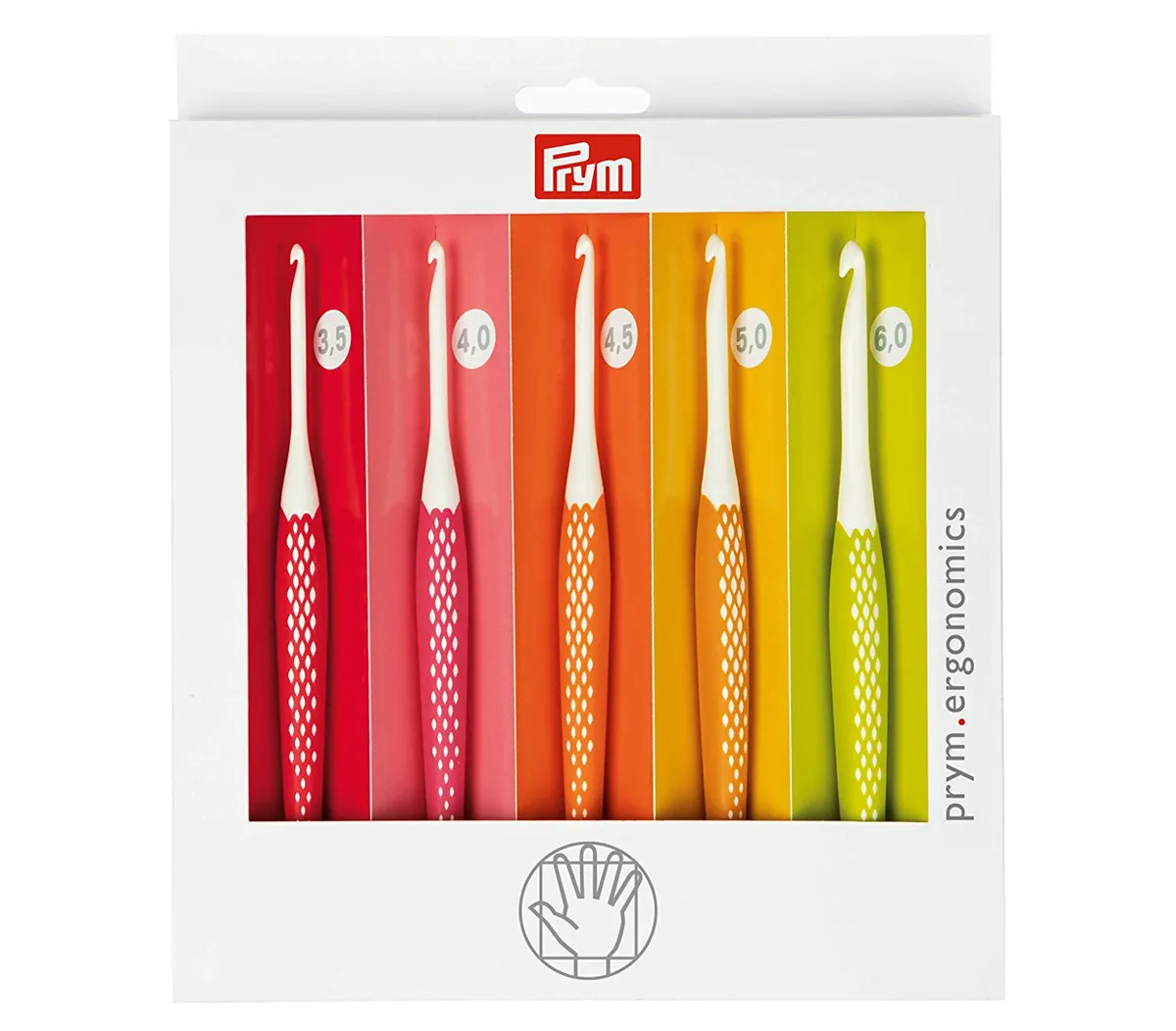
If you've well and truly fallen in love with crochet, you'll also need quite a few different hook sizes! Buying a hook set is often the best solution for this, as they normally include the most common sizes.
- Take a look at our best crochet hooks article to find the right hooks for you!
P.S. Want to get really fancy? check out our guide to the top 15 luxury crochet hooks.
How to read crochet patterns
At first glance crochet patterns can seem intimidating and complicated to crochet beginners. But if you break it down into chunks you'll realise it's simpler than it looks.
You can take a look at our full guide on how to read a crochet pattern, but let's have a quick look at the common parts of a pattern:
You will need/material list
Here you'll find the details of everything you need to make the project. As well as which size hook and yarn you need to use, this will also list any extra materials needed such as buttons/safety eyes, etc.
Some things may not always be listed but taken for granted, such as a yarn needle or scissors.
Tension
Tension is the word we use for how loose or tight a piece of crochet is. If you're making anything like a garment, tension is obviously very important to ensure that your crochet garment comes out the same size as the designer's.
Crochet beginners don't need to worry about this too much to start off with, but if you want to find out more, take a look at our guide on how to get your tension right in crochet
Measurements
The measurements section will tell you the measurements for the completed project. This may be provided in text or a schematic diagram, depending on the crochet project.
Abbreviations
Crochet patterns use a huge range of abbreviations, some of which are obvious, like the word 'stitches' being shortened to 'sts'.
Others may require some specific crochet knowledge of stitches, such as double crochet being shortened to dc and treble crochet shortened to tr.
If the pattern uses a special stitch, the instructions on how to crochet these will usually be included in the abbreviations section, and most good patterns will also include a list or link to a full list of abbreviations to help you out. You can find out more about abbreviations below.
Notes
Most patterns will start with a notes section, and it is VERY important that you read this carefully before starting on the project.
The notes will tell you important details about how the pattern is made. For example, if it involves any construction, refers to any charts, if there's different instructions for different sizes, specifics about how to read that particular pattern, etc.
Charts/Schematics
Depending on the project your pattern may also include one or more of the following charts:
Size chart - Measurements for the completed project. By choosing your size you will be told what instructions to follow, as well as if you need additional yarn for larger sizes. Normally it will also be accompanied by a schematic diagram showing you what area the measurements apply to.
Colour chart - For if the project involves changing colours midway through a row.
Stitch Diagram - These are used for particularly complicated patterns, and show you where exactly to place your stitches.
- All of these different chart types are explained in our guide on how to read crochet charts
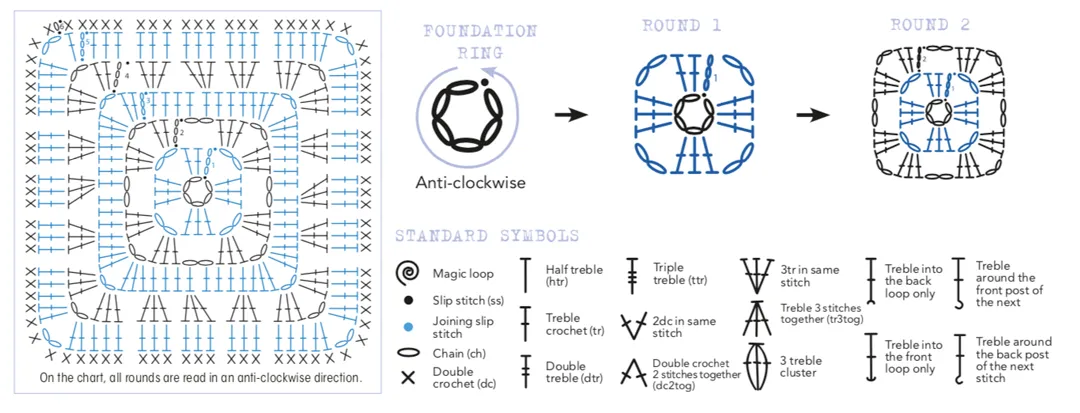
The Actual Pattern
The actual pattern is likely to be split into parts, unless it's just one continuous piece of crochet that doesn't require any piecing together of parts, for example a scarf.
After reading the notes, work through the pattern in order, making sure to pay attention to if you're told to make a particular part multiple times. Some people like to keep paper and a pencil to hand to keep track of where they are in the pattern.
It's important to be aware that round brackets and asterisks are often used in patterns to indicate repeated sections, whereas square brackets are used for final stitch counts to know how many stitches you have made in total.
Understanding crochet abbreviations
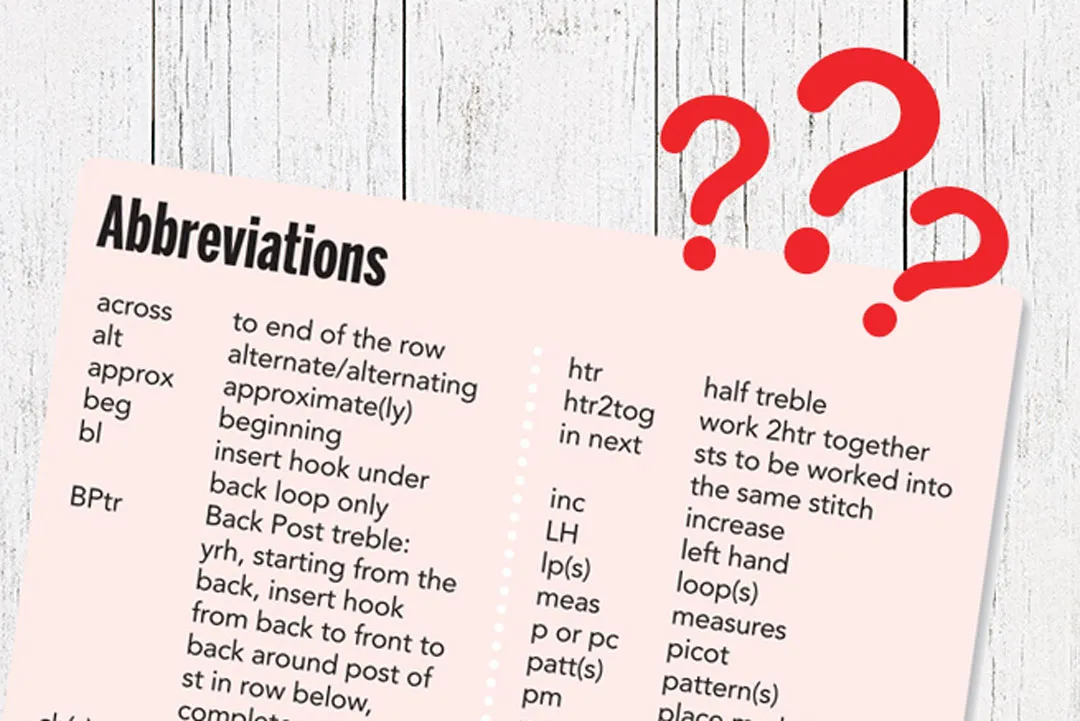
Almost every crochet pattern uses abbreviations – if they didn't, a simple pattern would end up being an awfully long piece of text! Many words are just shortened versions, for example, previous is prev, beginning is beg.
But other abbreviations are more specific, for example, BPhtr means a Back Post half treble crochet stitch. For this reason, you'll normally be provided with a list of abbreviations used.
There are also two terminologies used in crochet - UK and US. This can be a little confusing at times, but as a rule if you see something is called a 'single crochet' then you know it's in US terms (UK terms don't use single).
- Find all of our Crochet abbreviations and UK/US conversions.
It's also quite common for crocheters to use terms that you may not be familiar with, for example, C2C (means corner to corner), or WS/RS (which means wrong side/right side, referring to which side of the crochet fabric you're facing). You can find all of the most common ones in our glossary of crochet terms.
Crochet patterns for beginners
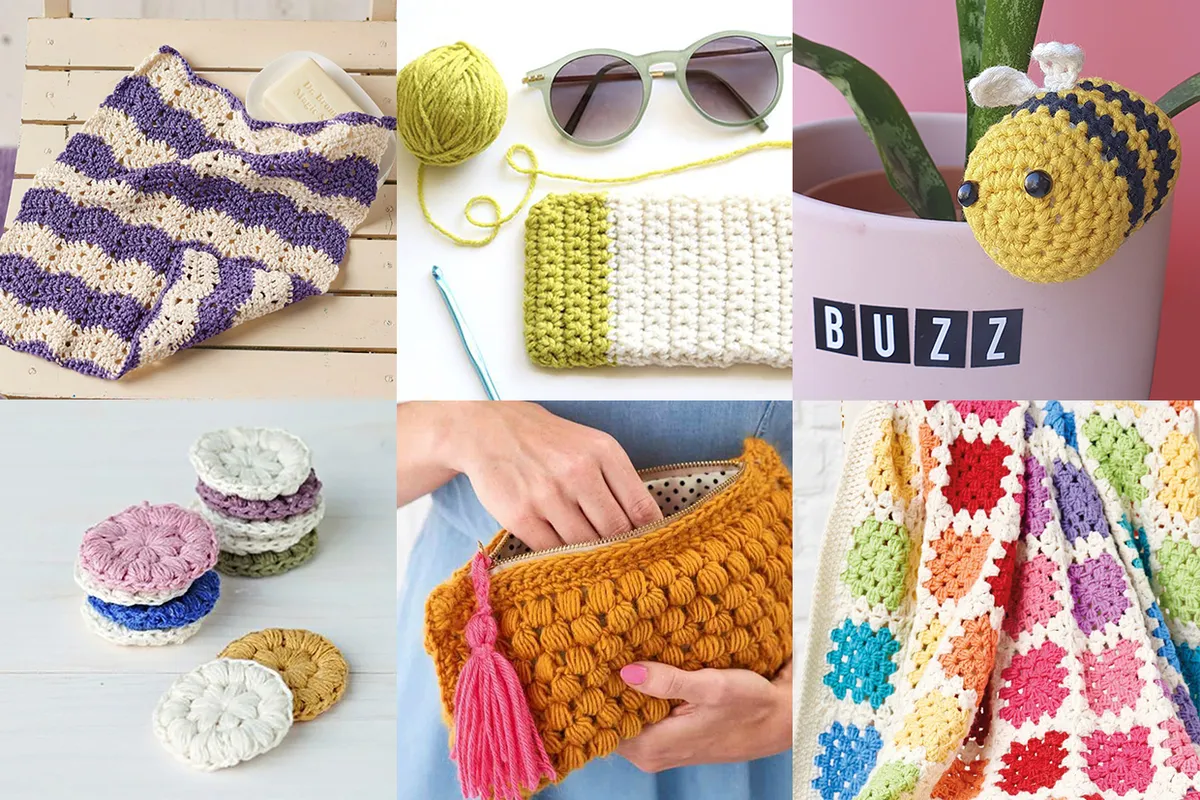
Once you've learnt the basics of how to crochet, it's time to get started on some patterns. We've got loads of free crochet patterns here on Gathered, and it might be tempting to throw yourself into a big project.
But if you take on too much too soon it's easy to get frustrated - better to start with some simple projects and progress gradually!
- Try our easy crochet patterns for beginners if you're just starting out.
A whole world of crochet awaits you
Now that you've been introduced to the basics of how to crochet, the best thing you can do is grab a hook and some yarn and practice, practice, practice! Some people do find crochet very confusing to start, but stick with it!
Those first few stitches can feel strange and look a bit wonky, but once you've done them a few times it'll start to get easier and make more sense.
As soon as you've mastered the basic stitches, everything else will start to become much clearer and those patterns that look super complicated won't seem quite as daunting.
Crochet for beginners and beyond
Once you've tried a few simple shapes and stitches, it's time to find your first proper project! Take a look at our free crochet patterns here on Gathered and find a project to make the most of your new-found skills.
